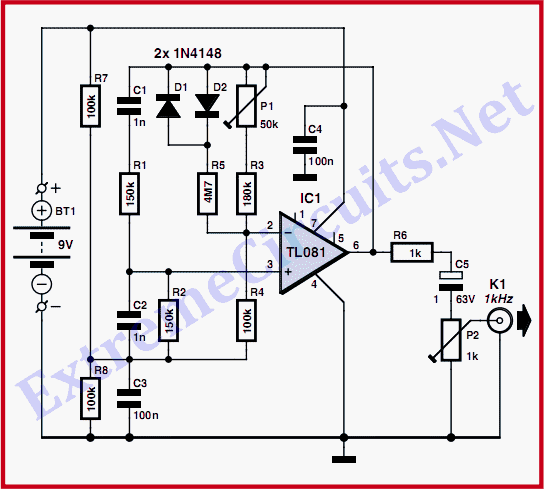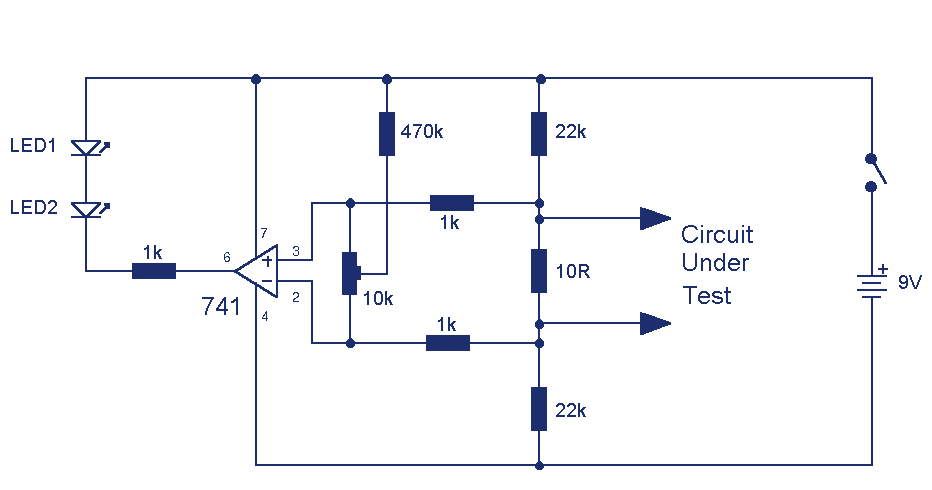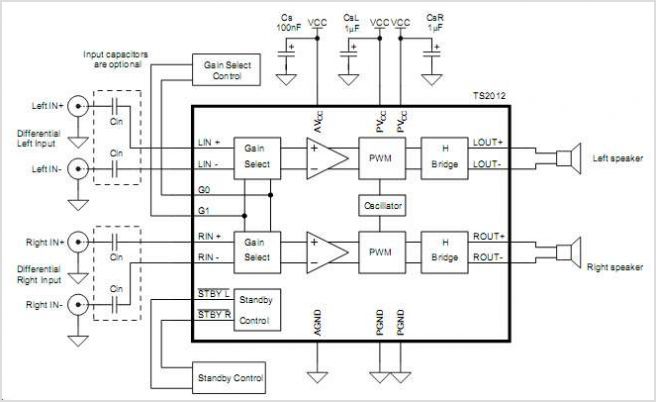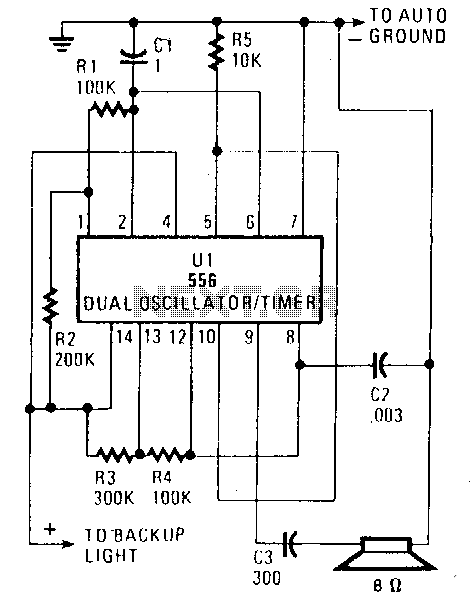
Test Beeper For Your Stereo

The test beeper generates a sinusoidal signal with a frequency of 1,000 Hz, a common test frequency for audio amplifiers. It consists of a classical Wien bridge oscillator configuration.
The test beeper circuit utilizes a Wien bridge oscillator, which is renowned for its ability to produce stable sine wave signals. The oscillator comprises resistors and capacitors arranged in a specific configuration to establish the desired frequency of oscillation. In this case, the frequency of 1,000 Hz is achieved through precise selection of resistor and capacitor values.
The Wien bridge oscillator consists of two arms of resistors and two arms of capacitors. The resistive elements set the gain of the circuit, while the capacitive elements determine the frequency. The feedback loop within the oscillator ensures that the output maintains a sinusoidal waveform. To stabilize the oscillation amplitude, a thermistor or light-dependent resistor (LDR) is often used, which adjusts the gain dynamically based on the output signal level.
The output of the oscillator is typically connected to a buffer amplifier to drive the load without affecting the oscillator's performance. This buffered output can be used to test audio amplifiers, speakers, or other audio equipment, providing a clean reference signal for analysis.
In summary, the test beeper circuit serves as a reliable tool for generating a 1,000 Hz sine wave, facilitating the testing and evaluation of audio amplifiers and other related devices.The test beeper generates a sinusoidal signal with a frequency of 1,000 Hz, a common test frequency for audio amplifiers. It consists of a classical Wien-.. 🔗 External reference
The test beeper circuit utilizes a Wien bridge oscillator, which is renowned for its ability to produce stable sine wave signals. The oscillator comprises resistors and capacitors arranged in a specific configuration to establish the desired frequency of oscillation. In this case, the frequency of 1,000 Hz is achieved through precise selection of resistor and capacitor values.
The Wien bridge oscillator consists of two arms of resistors and two arms of capacitors. The resistive elements set the gain of the circuit, while the capacitive elements determine the frequency. The feedback loop within the oscillator ensures that the output maintains a sinusoidal waveform. To stabilize the oscillation amplitude, a thermistor or light-dependent resistor (LDR) is often used, which adjusts the gain dynamically based on the output signal level.
The output of the oscillator is typically connected to a buffer amplifier to drive the load without affecting the oscillator's performance. This buffered output can be used to test audio amplifiers, speakers, or other audio equipment, providing a clean reference signal for analysis.
In summary, the test beeper circuit serves as a reliable tool for generating a 1,000 Hz sine wave, facilitating the testing and evaluation of audio amplifiers and other related devices.The test beeper generates a sinusoidal signal with a frequency of 1,000 Hz, a common test frequency for audio amplifiers. It consists of a classical Wien-.. 🔗 External reference





